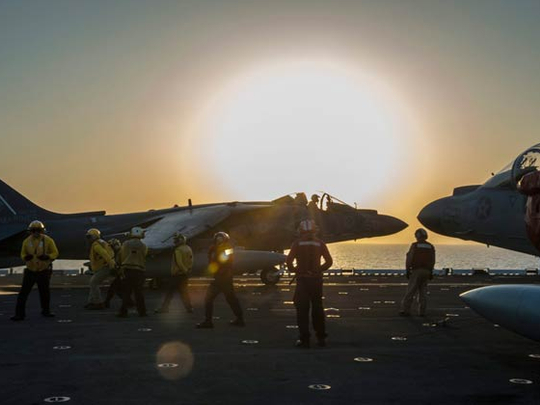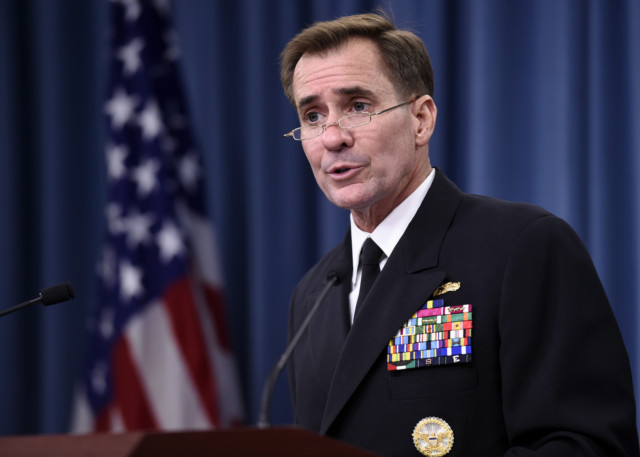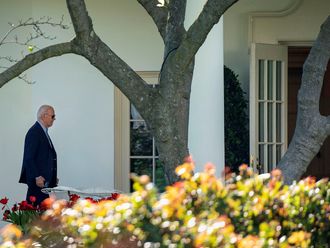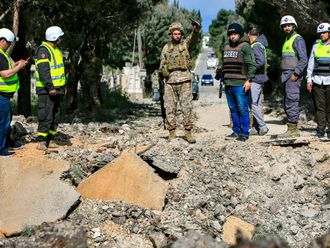
Abu Dhabi/Washington: US and Arab warplanes hammered the so-called Islamic State of Iraq and the Levant (which goes by the Arabic name Daesh) militants in eastern Syria early on Tuesday, opening a new front in the fight against the militant group, defence officials said.
The UAE confirmed that its air force joined the US-led air strikes against Daesh targets on Monday night.
"The first air strike was carried out in coordination with forces participating in international efforts against Daesh," according to a Foreign Ministry statement issued on Tuesday.
The Syrian Observatory for Human Rights said at least 120 Daesh fighters were killed in the air strikes. The monitor group also added Nusra Front positions had been struck in the provinces of Idlib and Aleppo in northwest Syria.
Bahrain, Jordan, Qatar, Saudi Arabia and the UAE took part in the bombing raids, US media reported, in an extraordinary show of Arab solidarity against the Isil group that has rampaged through Syria and Iraq.
A US defence official, who spoke on condition of anonymity, confirmed to AFP that Arab “partners” joined the bombing runs but did not say which countries were involved.
Bahrain had earlier confirmed that its air force joined the US and GCC strikes on terrorist sites in Syria.
Turning point
The US-led air assault in Syria marks a turning point in the war against Daesh, as the administration of US President Barack Obama had long been reluctant to intervene in Syria’s raging civil war.
But Washington concluded it had to act and convinced Arab allies to join in, amid fears Daesh fighters could wreak havoc across the region and eventually stage terror attacks in Europe or the United States if left unchecked.
“I can confirm that US military and partner nation forces are undertaking military action against (Daesh) terrorists in Syria using a mix of fighter, bomber and Tomahawk Land Attack Missiles,” Pentagon spokesman Rear Admiral John Kirby said in a statement.
The decision to conduct the air strikes was undertaken on Monday by the head of US Central Command, General Lloyd Austin, “under authorisation granted him by the commander in chief,” Kirby said.
“We will provide more details later as operationally appropriate.”
The strikes focused on Isil positions in Raqa, a stronghold for the Sunni extremists, as well as targets along the Iraq-Syria border, according to a second Pentagon official, who spoke on condition of anonymity.
US F-22 fighter jets, America’s most sophisticated warplane, were scheduled to take part in the raids as well - the first combat mission for the costly aircraft, the second official said.
Along with “ongoing” air raids, the US military fired Tomahawk cruise missiles from warships in the Gulf and Red Sea, the official said.
A senior White House official told AFP that Obama was “being updated on the operation” in Syria.
US media said the president had spoken to Congressional leaders about the strikes.
‘No safe haven’
The wave of strikes came less than two weeks after Obama warned that he had approved an expansion of the campaign against the Islamic State group to include action in Syria.
“I have made it clear that we will hunt down terrorists who threaten our country, wherever they are,” Obama said on September 10 in a speech to the nation.
“This is a core principle of my presidency: if you threaten America, you will find no safe haven.”
Under Obama’s orders, US warplanes began air strikes against Isil targets in Iraq on August 8, with about 190 raids carried out against the extremists there.
Obama, however, has repeatedly promised the campaign would not involve a combat mission for US ground troops in Iraq.
France is the only country to have joined the US air strikes against the Isil in Iraq. Australia said Monday it was deploying fighter jets to join the campaign.
Airstrikes, no ground attack
The US president’s strategy calls for American air power combined with training and arming local forces in Iraq and “moderate” rebel fighters in Syria.
His approach has sparked criticism in Washington and the Middle East that the effort will fail without capable ground forces that can roll back the well-organized and well-financed militants.
Last week, the US Congress endorsed Obama’s plan to train and arm moderate Syrian rebels to battle the Isil group, which has beheaded two American journalists, James Foley and Steven Sotloff.
Lawmakers on the left, wary of the United States plunging into another open-ended war in the Middle East, have vowed to hold broad use-of-force debates later this year following the November 4 midterm elections.
The air strikes in Syria came as Kurdish militia fought to defend a key border town in northern Syria, after 130,000 terrified residents fled to Turkey to escape an Isil militants advance.













